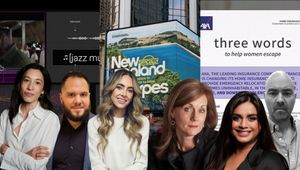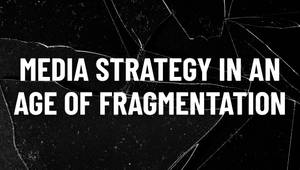
Understanding the Evolving Landscape of Diversity, Equity and Inclusion

Stand-up paddle boarders use three strategies to navigate rough waters. They adjust their paddle stroke to move in the right direction, engage their core to stabilise and focus on the horizon to balance. As a diversity, equity and inclusion professional, I have found these strategies useful for navigating the legal and political landscape that has emerged since the murder of George Floyd. His death catalysed a new wave of conversations about DEI in the workplace and commitments by companies to act. However, increased scrutiny of DEI and uncertainty caused by the Supreme Court’s ruling to end race-based Affirmative Action in higher education has caused some companies to roll back their efforts and left others uncertain about how to proceed. As we shape the next chapter of DEI, my suggestion is for companies to follow the three strategies used by stand-up paddle boarders, applying them as described below.
1. Adjust your approach and keep moving in the right direction
Amplify everyone’s story
I have always been compelled by people’s stories. They are textured and full of unexpected details that challenge preconceived notions. They are particular, differentiating us within and across groups. This tapestry of difference informs the unique perspectives we all bring to work. To build broad-based engagement and support for DEI in this context, organisations should embrace definitions of diversity that reflect this tapestry. They should strive to ensure that all employees feel seen, heard and valued, whether from majority and minority groups. One does not have to come at the expense of the other.
Elevate our commonalities
As much as our stories differentiate us, if we lean in with intentional curiosity, we can find so many ways in which we are alike. We share childhood milestones, obsessions with the same sports teams, experiences as caregivers, adoration of pets, interests in the same hobbies and so much more. Our commonalities are starting points for meaningful connection and organisations should find ways to elevate them in equal measure to our differences.
Clarify what equity means
Some organisations will reframe their work to centre diversity and inclusion in response to doubts about what equity means and attempts to achieve. If they do not stay committed to equity, they risk downplaying the fact that the playing field is not level for everyone. Access to and full inclusion in corporate workplaces for traditionally marginalised groups has been historically contested. It is often conditioned upon their willingness to fit into mainstream corporate cultures not defined by them. If we lose sight of equity, we could impede our ability to reflect the diversity of society at all levels because equity enables diversity. Organisations should clarify what equity means among key stakeholders and continue to pursue it in ways that are in line with current legal guidance.
2. Engage core planning principles to create a stable centre
Be clear on the “why” of your work
It is essential for organisations to have a data-driven, business-focused rationale for DEI work. They should seek out the perspectives of a wide range of stakeholders. They should clearly communicate the challenges they are addressing, possibilities they are realising, and how the work supports the organisation’s values and strategy.
Measure impact – by design
As organisations design their DEI programs, they should be guided by research on which approaches have proven effective; map out how each program component helps achieve the intended goals; administer evaluations during delivery; gather stakeholder feedback, especially from leaders; and use the data to increase program impact.
Play the long game
Building a truly diverse, equitable and inclusive organisation takes time. Quick fixes don’t create enduring change, and the impact of interventions may not be immediate, so organisations should align expectations. They should be clear about where they are and want to be in three-five years. Then, create a strategy to move toward their ambitions, at a pace that brings key stakeholders along.
3. Focus on the reality ahead to stay balanced
The increasing diversity of the U.S. workforce is well-evidenced. As such, the ability to attract and retain the best talent from all communities is not a “nice to have,” it is, and will continue to be, a business imperative. It will enable organisations to create work that authentically reflects the habits, interests and cultural reference points of all consumers.
Since DEI's inception in the U.S. in the late 1960s following the Civil Rights Act of 1964 and related executive orders, professionals in this field have adapted to evolving legal and political landscapes. DEI endures because it is fundamental to a healthy society. Organisations committed to this mission are shaping the next chapter of DEI. To succeed, they should take inspiration from stand-up paddle boarders navigating rough waters: adjust your stroke, engage your core and stay focused on the horizon.















